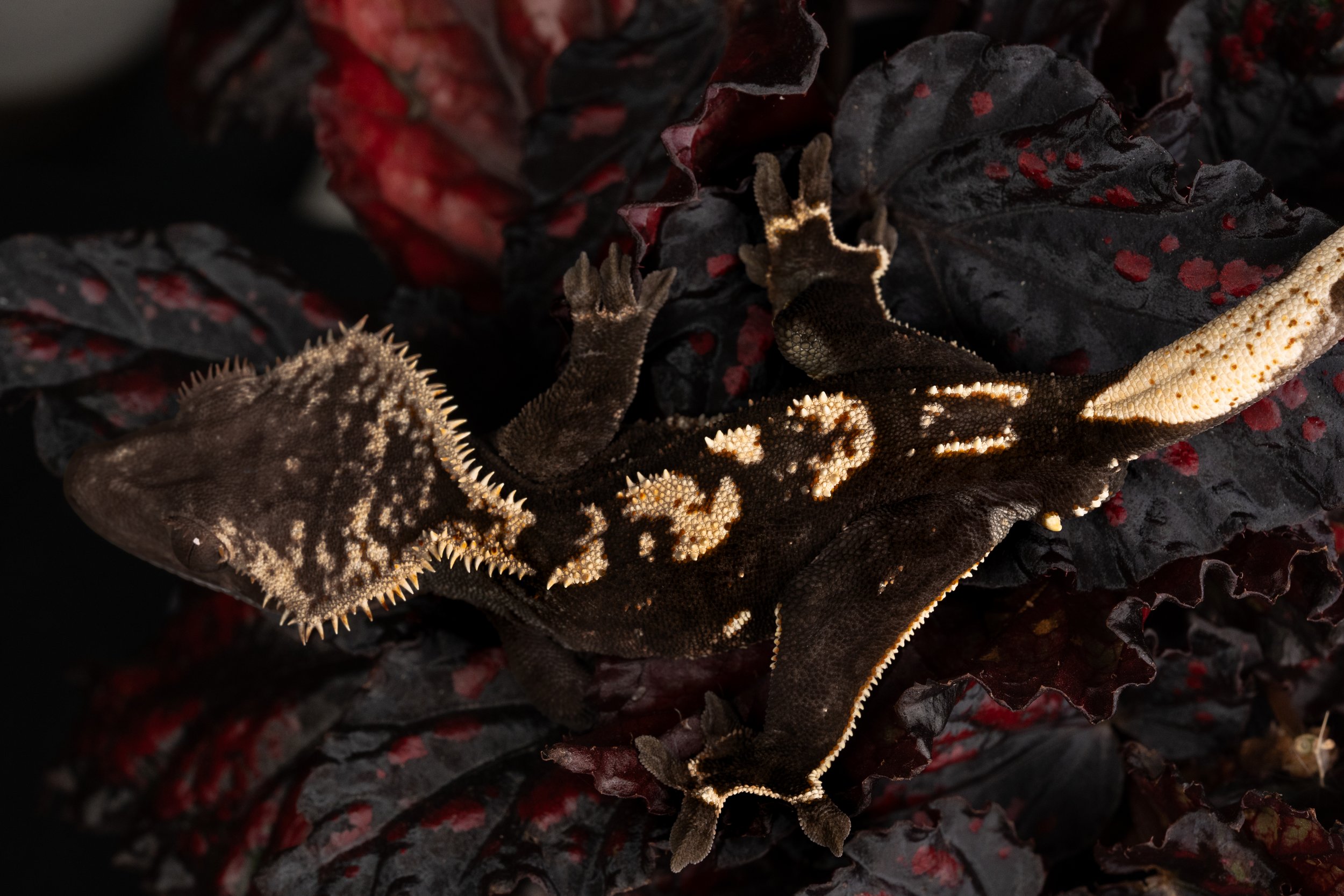FAQ:
Q: Why don’t you label every trait in your animals? (i.e hypo, white/orange pattern, “super” emptyback, het phantom/het emptyback?)
A: We keep it simple and don’t believe every trait needs to be labeled.
We believe that crested geckos have very few true genes that follow Mendelian genetics; Axanthic, Lilly White, Cappuccino, and Sable. This means we do not label line bred animals that do not express the best versions of their trait as “het”.
Q: How do you decide what animals to pair together?
A: We do not follow any specific guides or rules when pairing. We choose our pairs based on knowledge of lineage, pattern type (soft, hard), pattern direction (horizontal, vertical), structure, and base color.
Q: How do you prevent inbreeding?
A: Crested geckos are an island species, which means their population is small and isolated. Island species have evolved under consistent population bottlenecks, which likely means that even wild populations have been inbred over many generations. Despite this fact, crested geckos do not seem to express negative effects of close line breeding that we would see much quicker in mammals like ourselves. Regardless of the lack of issues thus far with inbreeding, we take steps to ensure our geckos are remain as diverse as possible by keeping extended lineage, outcrossing our projects to lines that are not in close relation, and refusing to closely inbreed (mother or father/offspring, full siblings, etc). Projects with high COI % (coefficient of inbreeding) are outcrossed to maintain diversity going forward.
Q: Do you line breed?
A: Yes. All breeders line breed to some extent; if you are breeding pinstripes, the chance that you are line breeding on Lellarap is probably greater than 90%. If you are breeding tigers/brindles, chances are, you are linebreeding on Falk.
As outlined above, this does not mean we are closely inbreeding animals. Our most common “closest relation” is a grandparent in common, but it is often even further back where relation occurs. There is seldom a “need” to linebreed closer than this, because there are so many animals available today that it is often easy to find suitable matches without the need to pair animals in close relation to achieve desired outcomes. Many larger breeders simply do not track lineage on their animals. Do we know that they aren’t pairing full siblings together, perhaps for even several generations in a row? There is no way of knowing how close someone is line breeding animals if they are not being transparent with their lineage. We have full transparency of all of our animal’s lineage, which can be seen on our “Breeder” pages. Our animals are housed solo, and pairs are only together for a few days, so you can be sure that the lineage on the animal you are receiving is accurate and truthful.






